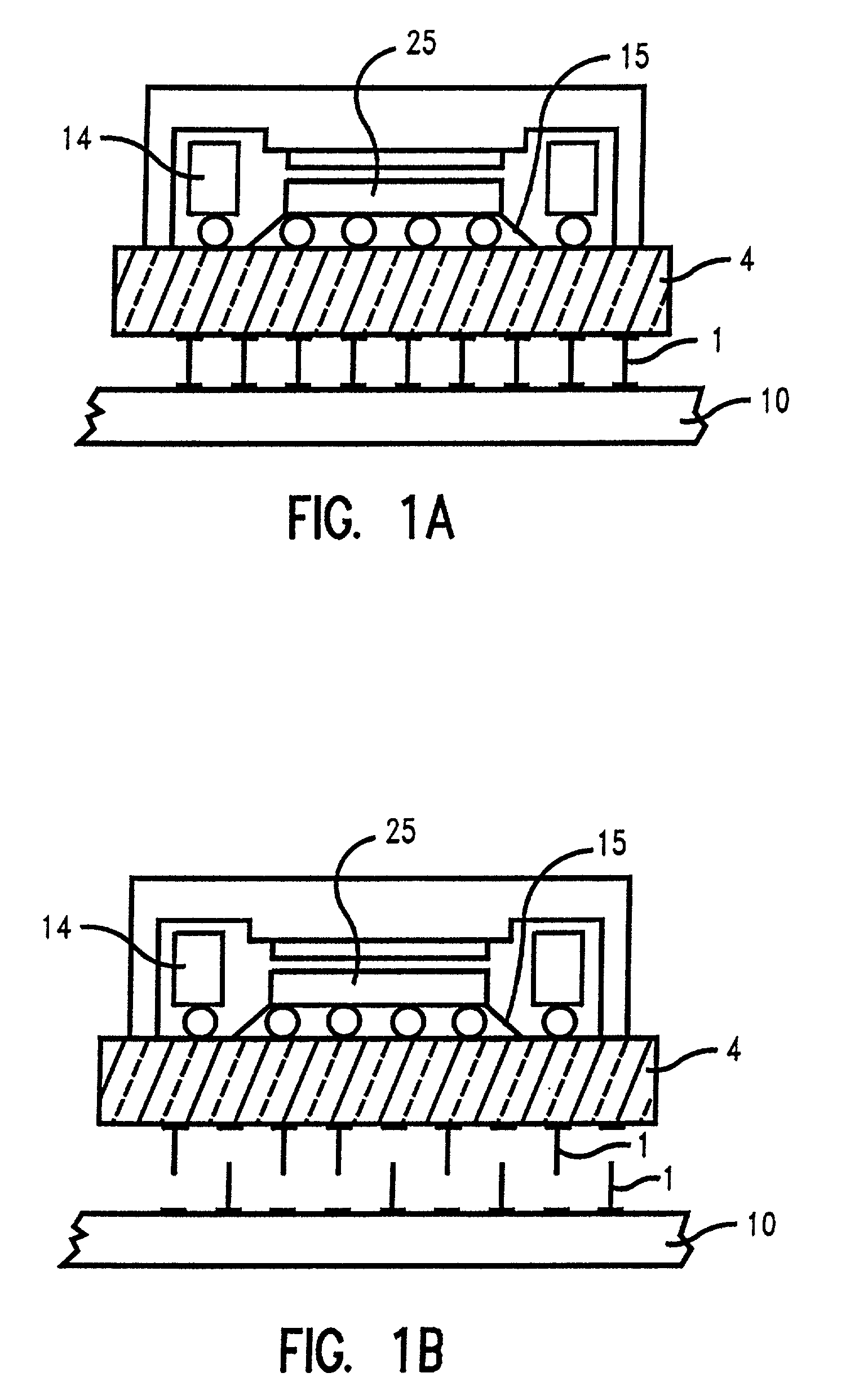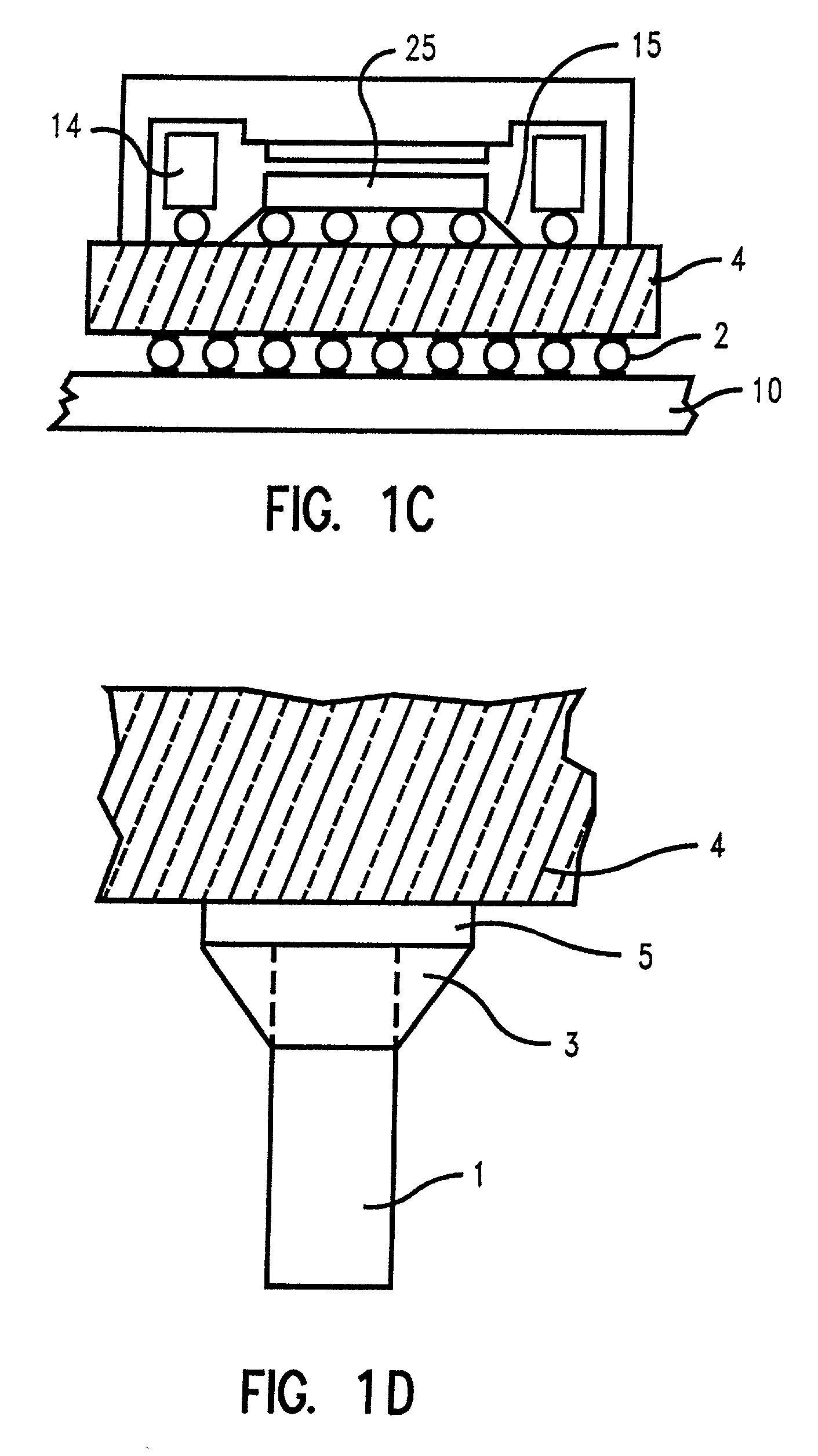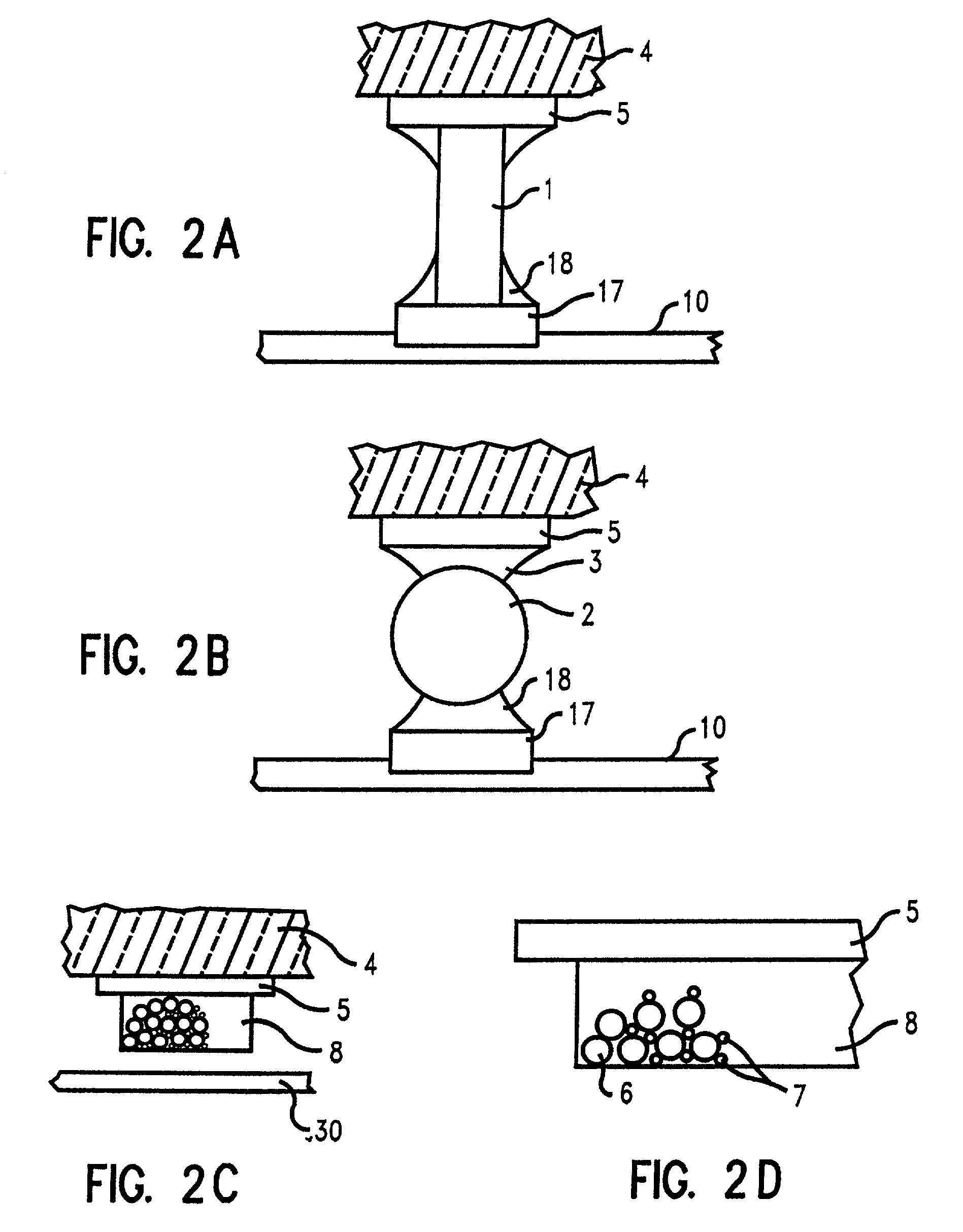Interconnection process for module assembly and rework
a module and interconnection technology, applied in the direction of printed circuit, sustainable manufacturing/processing, final product manufacturing, etc., can solve the problems of increasing the length of time, putting the interconnection structure out of alignment, and typical experien
- Summary
- Abstract
- Description
- Claims
- Application Information
AI Technical Summary
Benefits of technology
Problems solved by technology
Method used
Image
Examples
Embodiment Construction
)
[0035] In describing the preferred embodiment of the present invention, reference will be made herein to FIGS. 1-9 of the drawings in which like numerals refer to like features of the invention. Features of the invention are not necessarily shown to scale in the drawings.
[0036] This invention relates to an interconnection structure and a process for making and detaching the same. Chiefly, of a surface mount column or ball grid array for formation of an interconnection structure between an electronic module assembly and circuit board. Column Grid Arrays (CGAs) are conventionally created by joining a high melting solder column to a substrate by means of a low-melting solder. Alternatively, they are created by casting a high melting solder directly onto external pads on the ceramic substrate body. The latter process has some desirable characteristics, in that the joint to the substrate is high melting, and does not reflow during the attachment of the module assembly to the card. The f...
PUM
| Property | Measurement | Unit |
|---|---|---|
| particle sizes | aaaaa | aaaaa |
| dwell temperature | aaaaa | aaaaa |
| dwell temperature | aaaaa | aaaaa |
Abstract
Description
Claims
Application Information
 Login to View More
Login to View More - R&D
- Intellectual Property
- Life Sciences
- Materials
- Tech Scout
- Unparalleled Data Quality
- Higher Quality Content
- 60% Fewer Hallucinations
Browse by: Latest US Patents, China's latest patents, Technical Efficacy Thesaurus, Application Domain, Technology Topic, Popular Technical Reports.
© 2025 PatSnap. All rights reserved.Legal|Privacy policy|Modern Slavery Act Transparency Statement|Sitemap|About US| Contact US: help@patsnap.com



